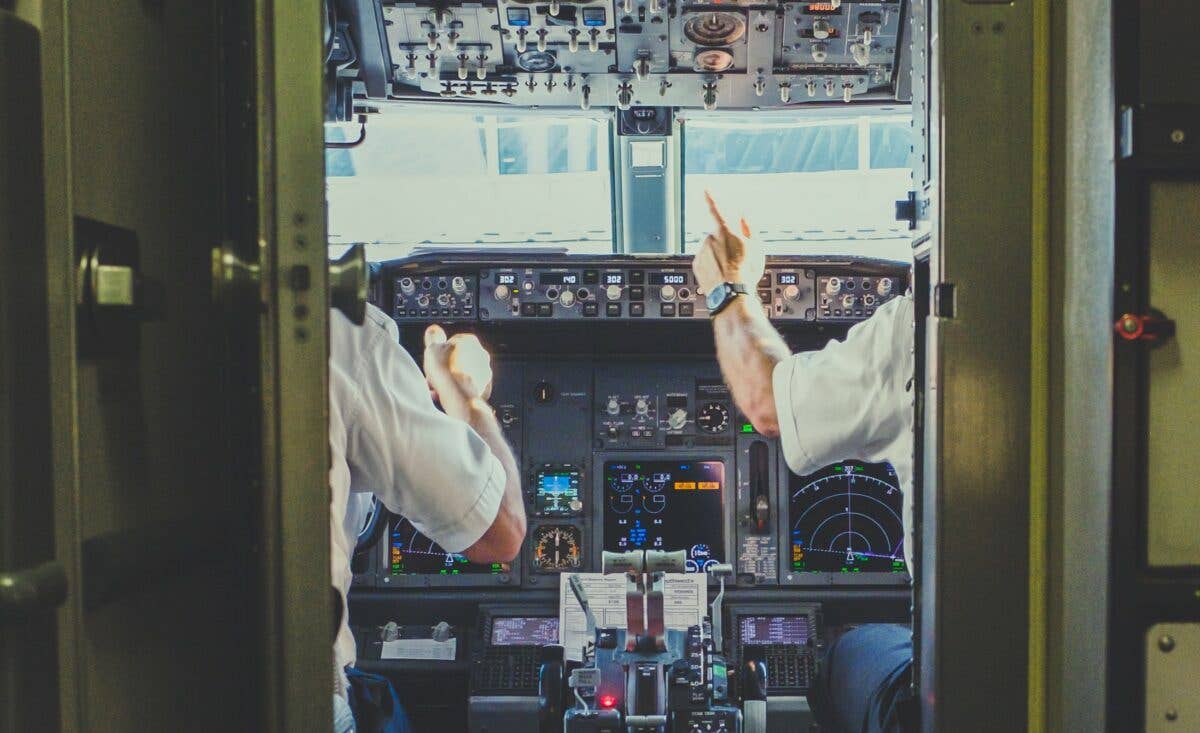Secondary Cockpit Barrier Now Required on New Commercial Aircraft
Pilot groups applaud the new FAA security requirement.

The FAA is now requiring all new commercial aircraft to have a secondary barrier on the flight deck. [Credit: Kenny Eliason/ Unsplash]
The FAA is now requiring all new commercial aircraft to have a secondary barrier on the flight deck in order to ensure the safety of aircraft, flight crew, and air passengers.
The first lockable flight deck doors were installed in response to the hijackings of September 11, 2001. The final rule mandating the additional barrier will protect flight decks from intrusion when the flight deck door is open.
The Biden administration made this requirement a priority in 2021. In 2022, the FAA proposed the rule after seeking recommendations from aircraft manufacturers and labor partners. The rule meets a requirement of the 2018 FAA Reauthorization Act.
“Every day, pilots and flight crews transport millions of Americans safely—and today we are taking another important step to make sure they have the physical protections they deserve,” U.S. Transportation Secretary Pete Buttigieg said in a statement.
Under the rule, aircraft manufacturers are required to have installed physical secondary barriers (IPSB) on commercial aircraft produced after the rule takes effect.
According to the Notice of Proposed Rulemaking, the IPSB will be closed and locked whenever the flight deck door is opened while the airplane is in flight. This final regulation affects operators conducting passenger-carrying operations under Title 14 of the Code of Federal Regulations (14 CFR) part 121 with transport category airplanes operating in the United States.
The NPRM notes "when the flight deck door must be opened for lavatory breaks, meal service, or crew changes, the flight deck could be vulnerable to attack. The benefit of this rule, requiring installation and use of IPSBs on airplanes in part 121 service, is to slow such an attack long enough so that an open flight deck door can be closed and locked before an attacker could reach the flight deck."
Aircraft operators must comply when operating transport category airplanes manufactured two years after the effective date of this final rule.
The NPRM for the IPSB was released last summer. The FAA received 51 comments of support from stakeholders in the industry, including Airlines for America, Association of Flight Attendants-Communications Workers of America, Aerospace Industries Association , Coalition of Airline Pilots Association, International Coordinating Council of Aerospace Industries Associations-Cabin Safety Working Group, Japan Civil Aviation Bureau, Regional Airline Association (RAA), Southwest Airlines Pilots Association, Transport Canada Civil Aviation, Transportation Trades Department, United Airlines, and aircraft manufacturers Airbus, Boeing and Embraer.
The Air Line Pilots Association released a statement applauding the FAA for finally passing the rule.
“Twenty-two years ago this September, terrorists used passenger aircraft to kill nearly 3,000 of our fellow Americans and shattered our sense of safety and security,” said Capt. Jason Ambrosi, ALPA president. “We responded to these attacks decisively and put multiple measures in place to prevent another tragedy like this from happening, but until now have failed to act to install secondary flight deck door barriers. I applaud Acting FAA Administrator Polly Trottenberg for moving to implement this live-saving measure after years of needless delay.”
ALPA, the largest airline pilot union in the world with more than 74,000 pilots at 42 U.S. and Canadian airlines, has been a strong proponent of these lightweight security devices that have proven effective in creating a physical barricade to help prevent hostile individuals from reaching the flight deck while its door is opened during flight.
“With this action today addressing the installation of secondary barriers on newly manufactured aircraft, we must redouble our efforts to pass the Saracini Enhanced Aviation Safety Act (H.R. 911/S. 911) to address the retrofitting of existing airliners, and work to install primary barriers on cargo aircraft,” Ambrosi said. “Because ensuring that no terrorist—domestic or international—breaches another aircraft flight deck door again should be one of this nation’s highest security priorities.”
The FAA estimates the IPSB purchase and installation will cost $35,000.
Trottenberg signed this final rule on Wednesday. The published document could contain minor changes due to formatting and editorial requirements, and the docket will not go live until publication.

Sign-up for newsletters & special offers!
Get the latest FLYING stories & special offers delivered directly to your inbox






